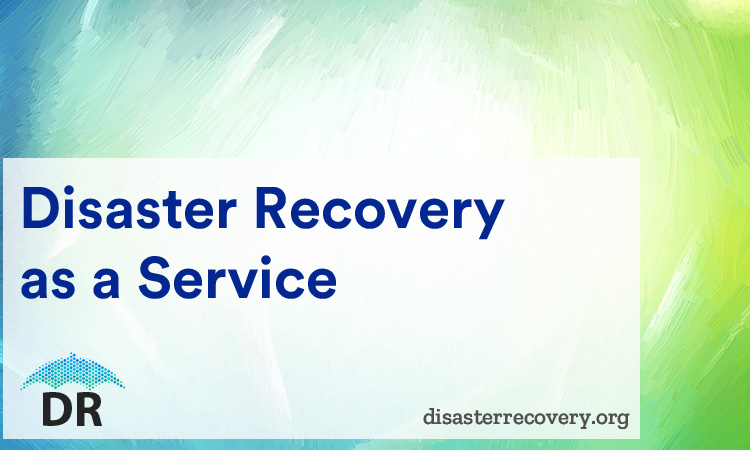In today’s fast paced and highly competitive world, a sound, secure, tried and tested Disaster Recovery Plan is of utmost importance. Without such contingency planning, in the event of a disaster, it will be very difficult for the organization to recover.
Disaster Recovery as a Service

Many organizations opt for an in-house DR solution. The popular method was to store backed-up data on tapes, disks etc. and have an off-site production center as standby. There were DR Service providers available in the market, but the cost was prohibitive and reliability was not absolutely guaranteed. All this changed when the cloud computing revolution hit the IT field. Initially the cost was high, but as more competitors emerged, cloud services became highly cost effective. Among the service providers were those who offered Disaster Recovery as a Service or DRaaS.
The advantages of Disaster Recovery as a Service are:
- Cost Effective – Due to intense competition, Disaster Recovery as a Service has become more cost effective, so much so, even small businesses are able to afford it.
- How it works – In Disaster Recovery as a Service the data is backed up directly into hypervisors, run at remote locations by the servers of the DR, where the data is duplicated in the cloud.
- Makes DR relatively simple – Since Disaster Recovery as a Service takes care of all aspects of DR, the organization does not need to maintain costly back-up equipment and have staff to keep track of the changes in best practices in DR.
- Improvement in efficiency – Due to using the Disaster Recovery as a Service option, the RPO and RTO metrics can be drastically reduced without a corresponding increase in costs resulting in a more efficient DR Plan at a far lesser cost.
- Flexibility in operations – When using Disaster Recovery as a Service, an organization needs only pay for the services it uses. If it requires additional services, they are readily available and on demand. The Disaster Recovery as a Service also permits users to decide the sequence, types of data and applications that need to be backed up.
- Security – The security of data when using cloud services has increased tremendously over the years. The cloud service providers use the latest encryption technology along with a two stage authentication process to prevent unauthorized access.
Key factors affecting an effective DR Plan
There are some key factors that affect the working of a Disaster Recovery Plan. When deciding the services under Disaster Recovery as a Service, these factors should be carefully considered. They are:
- Recovery Point Objective [RPO] – This is the maximum permissible loss of data before it starts to impact the business severely. It refers to the point in time from the latest back-up till the production stopped. The smaller the RPO, the higher the cost of service.
- Recovery Time Objective [RTO] – This is the maximum acceptable down time. Beyond this it will affect revenues and customer goodwill beyond what the organization can bear. The time includes the time taken to find out what happened, recover data, system restore etc. till production restarts. If the RTO is very small, then the production can be restarted almost immediately and Business continuity will be seamless in such scenarios. However, the smaller the RTO, larger the investment required to meet objectives.
- Performance of the Cloud under DR conditions – If things go according to plan, the impact on normal business operations will be minimal. The performance parameters of all applications being protected under the plan should be within planned limits.
- Consistency of Performance – After the disaster, the Disaster Recovery as a Service should restore the applications to a consistent state. There should not be any variation in performance or glitches.
- Geographical Separation – The DR site should be as far away as possible from the primary production site. This will ensure that both facilities will not be impacted at the same time.
A Disaster Recovery as a Service plan offers the best DR Plan at a low price. It is a reliable service. However, all organizations should do due diligence regarding the service provider before signing a long term contract.

